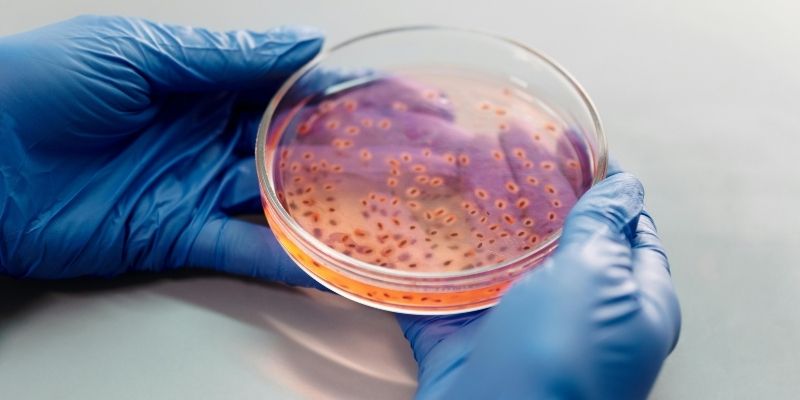Hyperoxaluria Vs. Oxalosis: Key Differences, Causes, And Treatments
Hyperoxaluria and oxalosis are two conditions involving the accumulation of oxalate, a substance found in many foods and produced by the body. While they are related, they have distinct causes, symptoms, and treatments. Understanding the differences between these two conditions is crucial for effective diagnosis and management.
This article will explore the key differences, causes, symptoms, and available treatments for hyperoxaluria and oxalosis, providing you with a clearer understanding of these complex health issues.
What is Hyperoxaluria?
Hyperoxaluria refers to an abnormal increase in oxalate levels in the urine, which can lead to the formation of kidney stones and potential kidney damage. It is classified into two types:
Primary Hyperoxaluria: A genetic disorder that leads to an overproduction of oxalate. This condition can be caused by mutations in genes responsible for enzymes that break down oxalate, leading to its accumulation.
Secondary Hyperoxaluria: Caused by external factors such as diet, gastrointestinal diseases, or other conditions that increase the production or absorption of oxalate in the body.
What is Oxalosis?
Oxalosis is a more severe form of hyperoxaluria, where excess oxalate accumulates not only in the kidneys but also in other organs such as the bones, heart, and eyes. This accumulation can lead to organ damage, particularly in patients with primary hyperoxaluria. Oxalosis may result in progressive kidney failure if left untreated.
Key Differences Between Hyperoxaluria and Oxalosis:
- Cause: Hyperoxaluria can be caused by genetics (primary) or dietary and lifestyle factors (secondary), while oxalosis is typically a complication of untreated primary hyperoxaluria.
- Severity: Hyperoxaluria, mainly secondary, can be mild and manageable, whereas oxalosis is more severe, involving multiple organs and leading to significant health issues.
- Impact on Organs: Hyperoxaluria primarily affects the kidneys, leading to kidney stones and potential kidney failure. Oxalosis, however, can affect the kidneys as well as other organs, causing damage to the cardiovascular system, bones, and eyes.

Causes of Hyperoxaluria and Oxalosis:
- Primary Hyperoxaluria: This genetic disorder results from mutations in the genes responsible for breaking down oxalate. In type 1 primary hyperoxaluria, the liver produces an enzyme that is deficient or nonfunctional, leading to excessive oxalate production.
- Secondary Hyperoxaluria: Common causes include high dietary intake of oxalate-rich foods, intestinal malabsorption conditions (like Crohn’s disease or celiac disease), and certain medications that increase oxalate production.
- Oxalosis: Most often a result of untreated primary hyperoxaluria, oxalosis leads to widespread accumulation of oxalate crystals in various tissues, causing severe damage to organs over time.
Symptoms of Hyperoxaluria and Oxalosis:
Hyperoxaluria Symptoms:
- Recurrent kidney stones.
- Pain in the back or sides due to kidney stones.
- Blood in the urine.
- Urinary tract infections.
- Decreased kidney function over time.
Oxalosis Symptoms:
- Severe kidney stones.
- Kidney failure.
- Bone pain or fractures.
- Heart problems (e.g., arrhythmias).
- Visual disturbances due to oxalate buildup in the eyes.
Diagnosis of Hyperoxaluria and Oxalosis:
Diagnosing hyperoxaluria and oxalosis involves several tests and procedures:
- Urine Testing: Measuring oxalate levels in the urine is the primary method for diagnosing hyperoxaluria. A 24-hour urine collection can help determine the amount of oxalate being excreted.
- Genetic Testing: For primary hyperoxaluria, genetic tests can identify mutations in the relevant genes. These tests are crucial in confirming the diagnosis of the condition.
- Imaging: CT scans, ultrasounds, or X-rays are often used to detect kidney stones and organ damage caused by oxalate crystal deposits.
- Blood Tests: Blood tests may be conducted to assess kidney function and determine any other related issues, such as elevated calcium or phosphate levels, which are commonly associated with oxalate accumulation.
Treatment Options for Hyperoxaluria and Oxalosis:
Treatment options for both hyperoxaluria and oxalosis depend on the severity of the condition and the underlying cause. Here are the most common treatment approaches:
- Dietary Changes:
Low-Oxalate Diet: Reducing the intake of oxalate-rich foods, such as spinach, beets, nuts, and chocolate, can help manage secondary hyperoxaluria. Patients are advised to limit foods that promote oxalate absorption.
- Increase Calcium Intake:
Consuming more calcium may help bind to oxalate in the gut, reducing oxalate absorption and preventing kidney stones.
- Medications:
Potassium Citrate: This medication helps prevent the formation of kidney stones by increasing the urine pH and making it less conducive to stone formation.
Vitamin B6: In some cases of primary hyperoxaluria, vitamin B6 supplements may help reduce oxalate production by the liver.
Thiazide Diuretics: These are used to reduce the amount of calcium in the urine, which can help prevent kidney stones.
- Dialysis:
In cases of severe oxalosis, where kidney function is significantly impaired, dialysis may be required to filter waste products from the blood. This is especially important for patients with end-stage kidney disease caused by oxalate buildup.
- Liver Transplant:
For patients with primary hyperoxaluria type 1, liver transplantation may be recommended. The liver is the organ responsible for producing oxalate, so a transplant can help correct the enzyme deficiency and reduce oxalate production.
- Kidney Transplant:
If kidney function deteriorates significantly due to oxalate accumulation, a kidney transplant may be necessary. However, this is typically done after addressing the underlying oxalosis to prevent recurrence.
- Hydration:
Maintaining adequate fluid intake is essential to prevent kidney stones. Drinking plenty of water helps flush oxalate out of the system and reduces the risk of stone formation.

Prevention and Management:
Preventing hyperoxaluria and oxalosis involves both lifestyle and medical strategies:
Early Diagnosis: Early detection and diagnosis of hyperoxaluria are critical for managing the condition and preventing progression to oxalosis.
Regular Monitoring: Patients with hyperoxaluria or oxalosis should have regular check-ups to monitor kidney function, oxalate levels, and any organ damage.
Genetic Counseling: Families with a history of primary hyperoxaluria may benefit from genetic counseling to understand the risk of passing the condition to offspring.
Conclusion
Both hyperoxaluria and oxalosis are severe conditions that require early diagnosis and careful management. With the proper treatment approaches, including dietary changes, medications, and sometimes surgical interventions, patients can manage their condition and prevent complications. If you are experiencing symptoms related to kidney stones, kidney failure, or other organ damage, it’s essential to consult with a healthcare provider for appropriate diagnosis and treatment.










